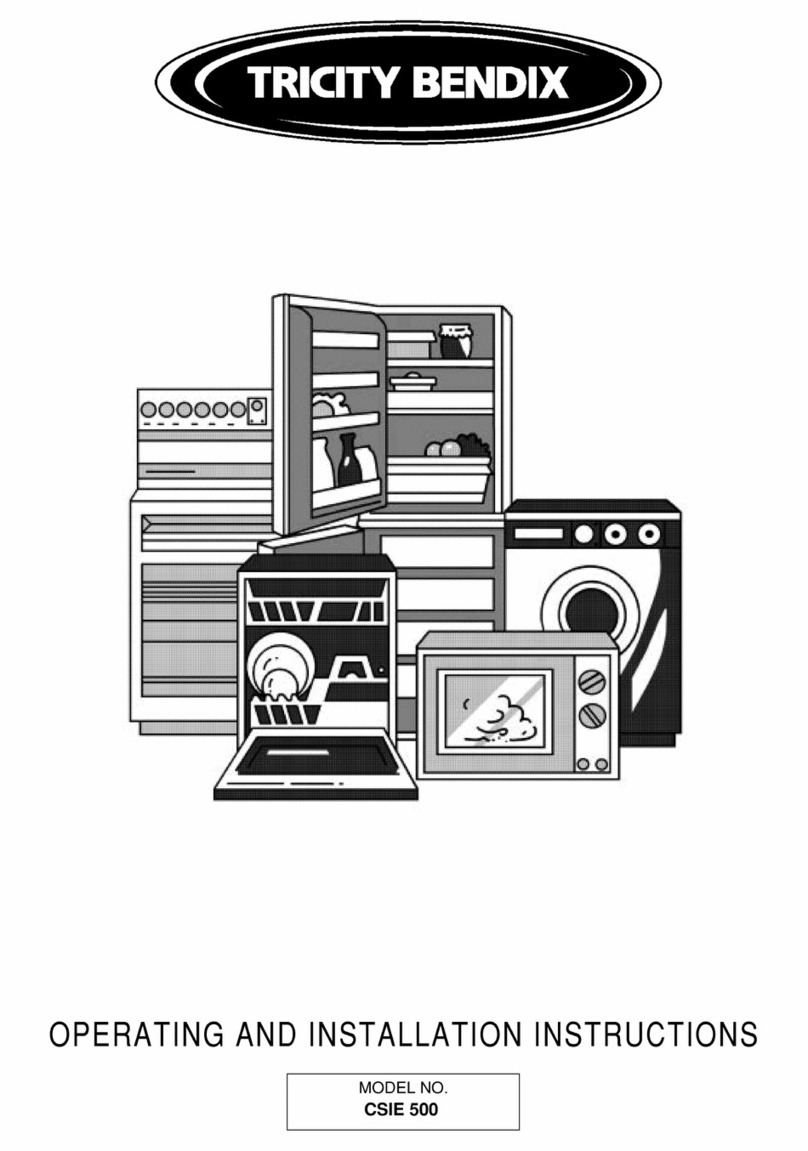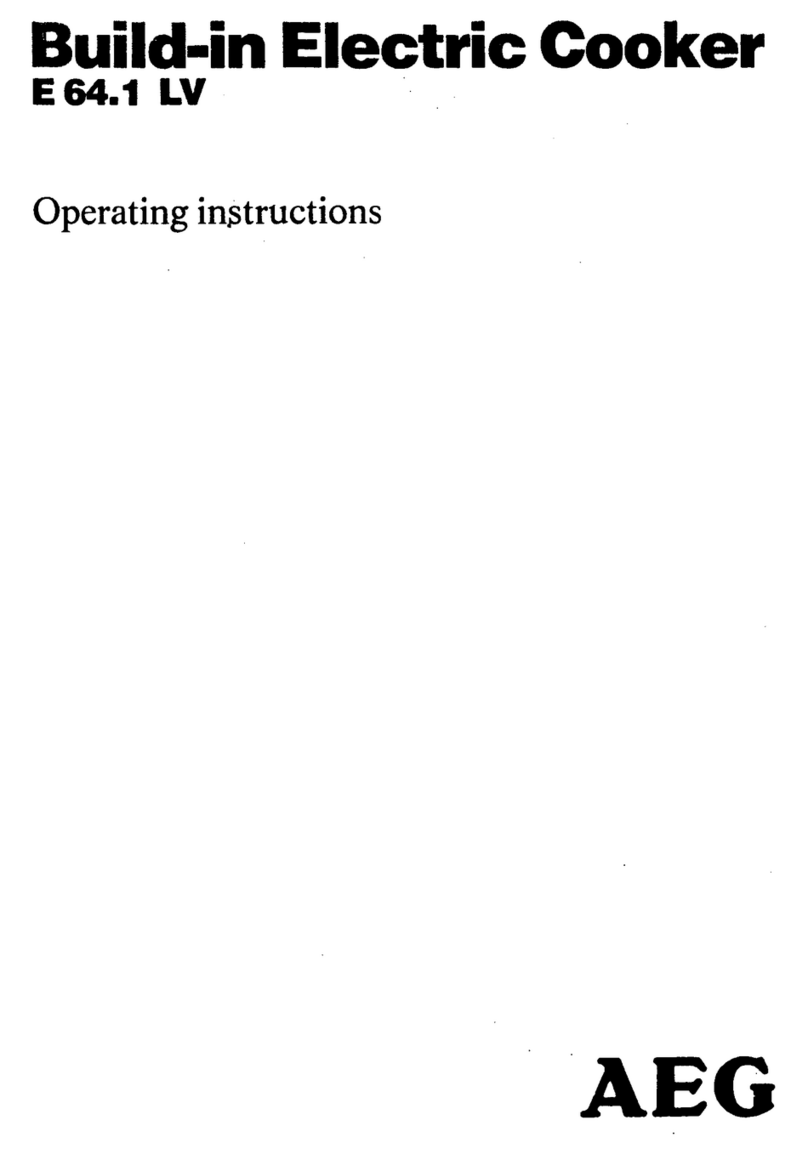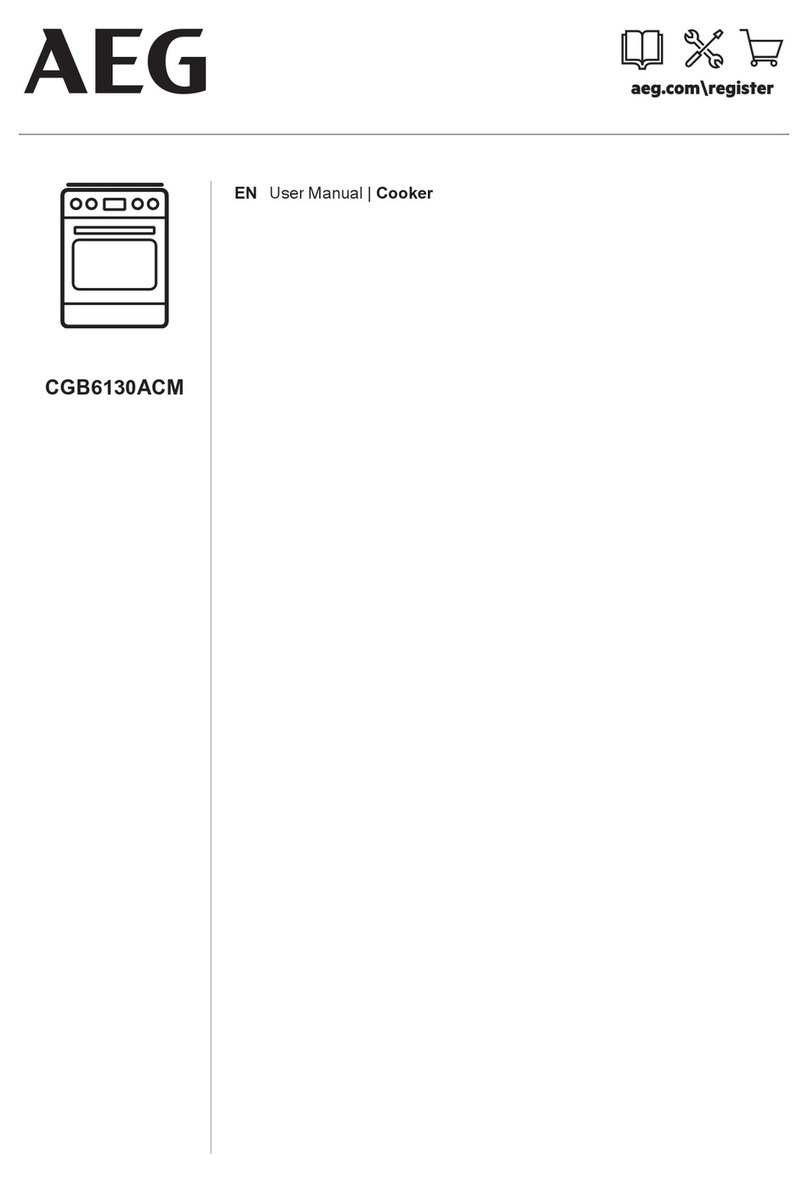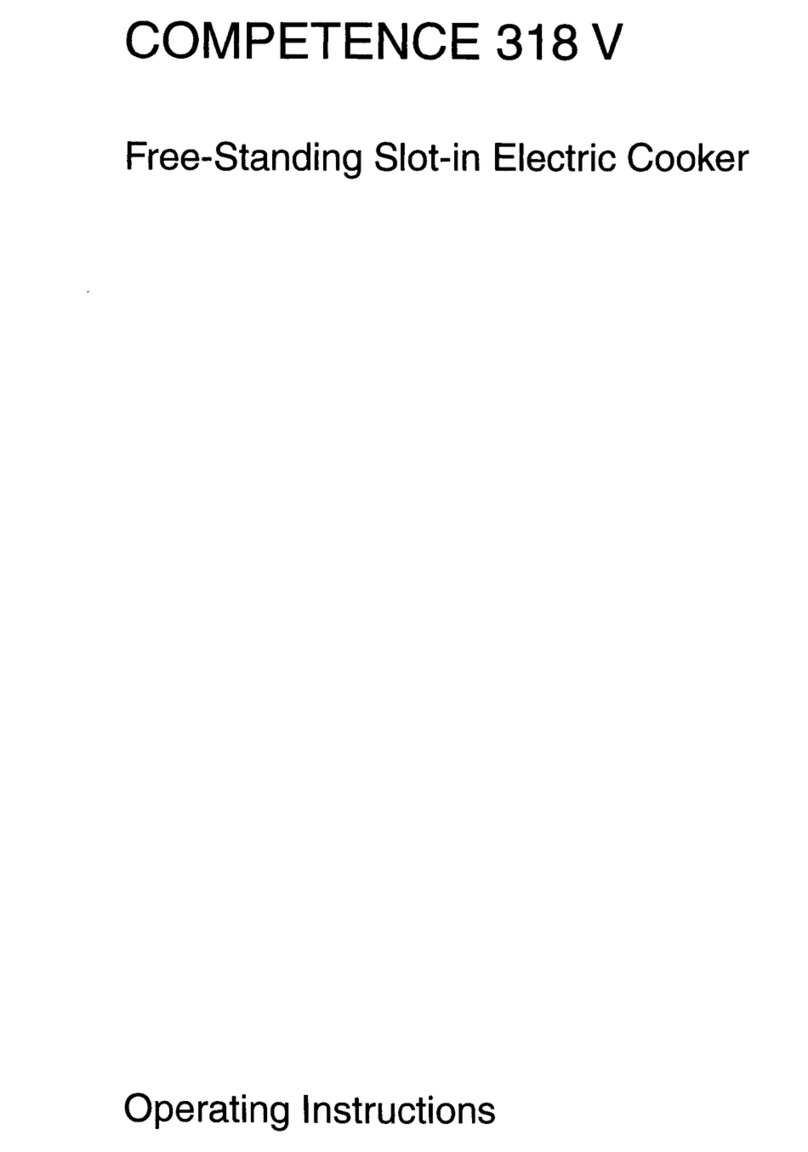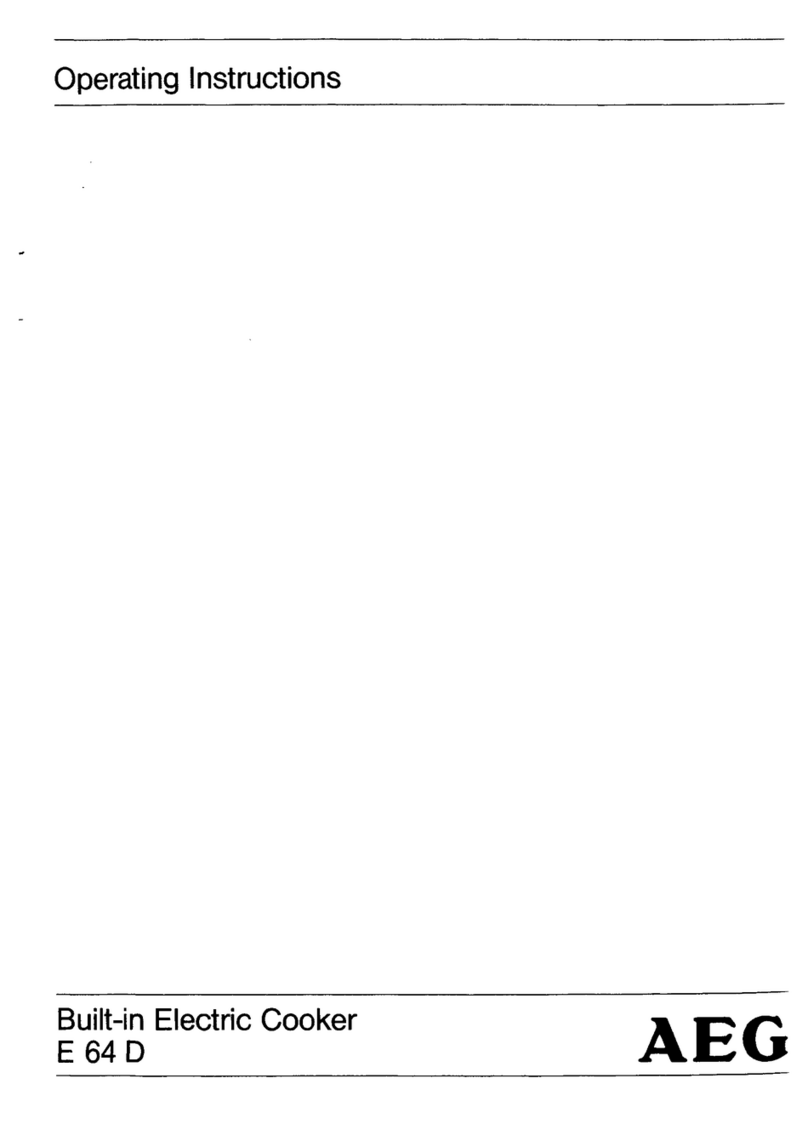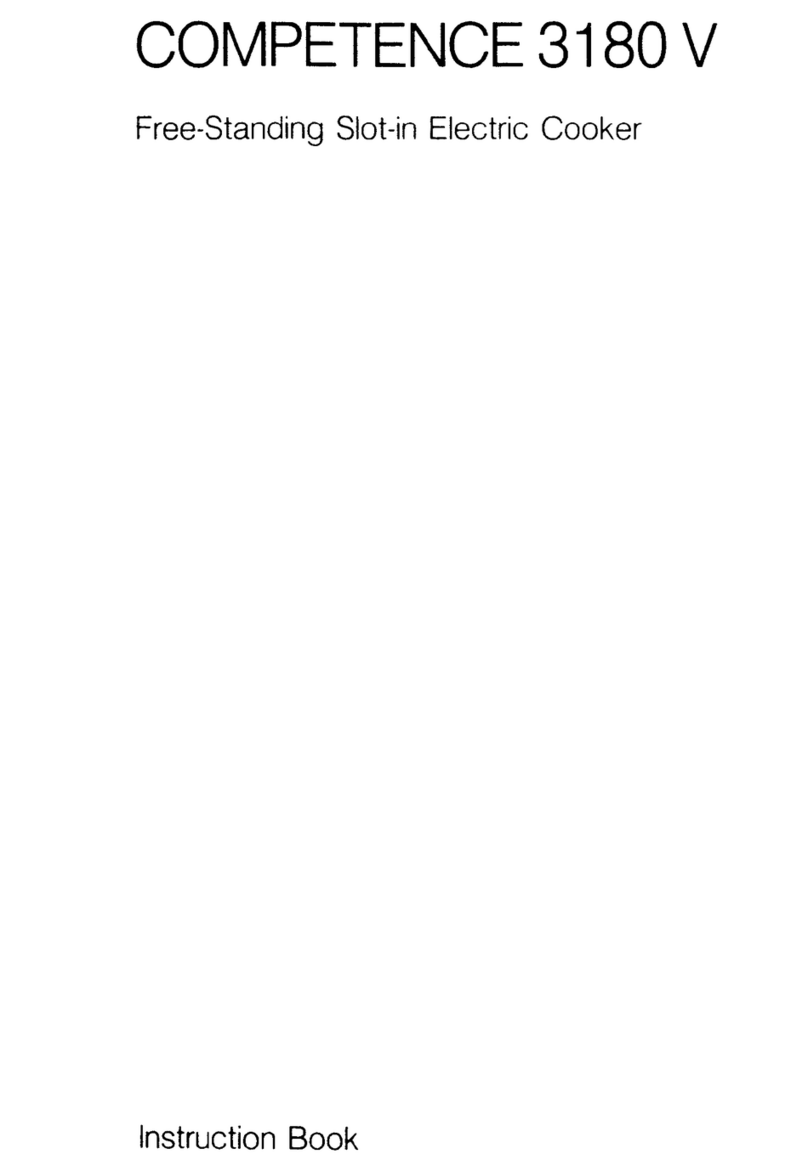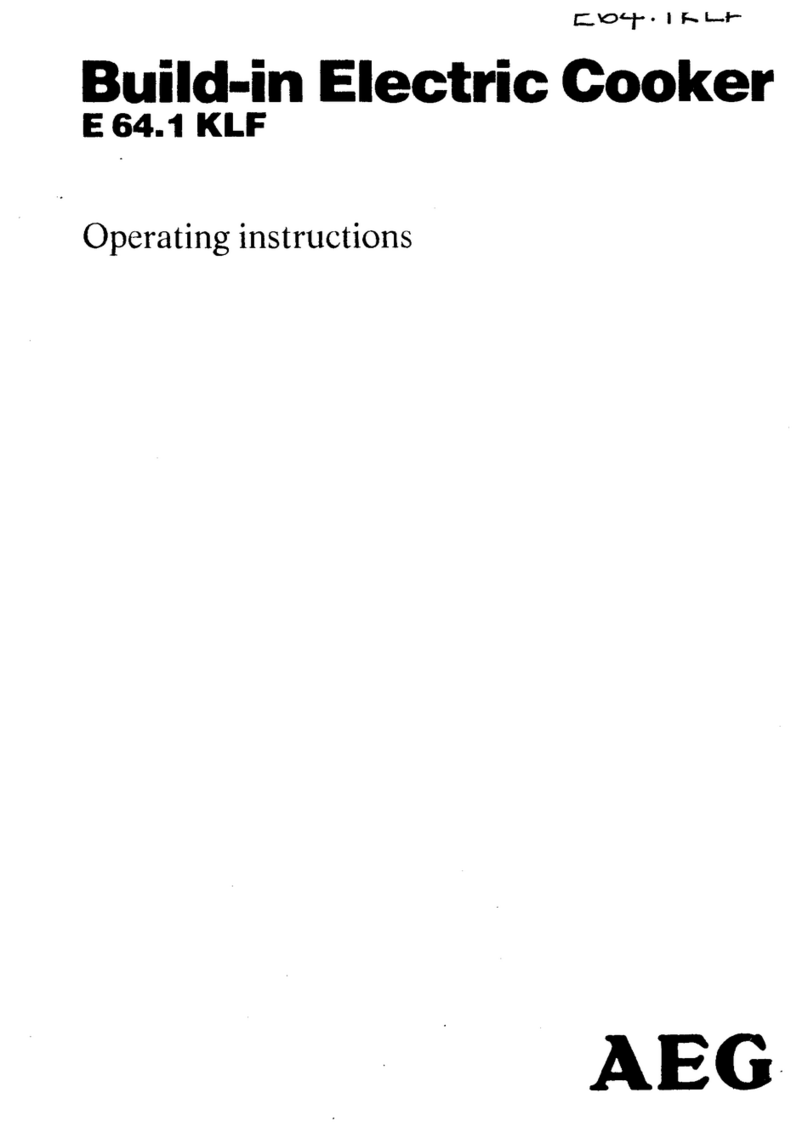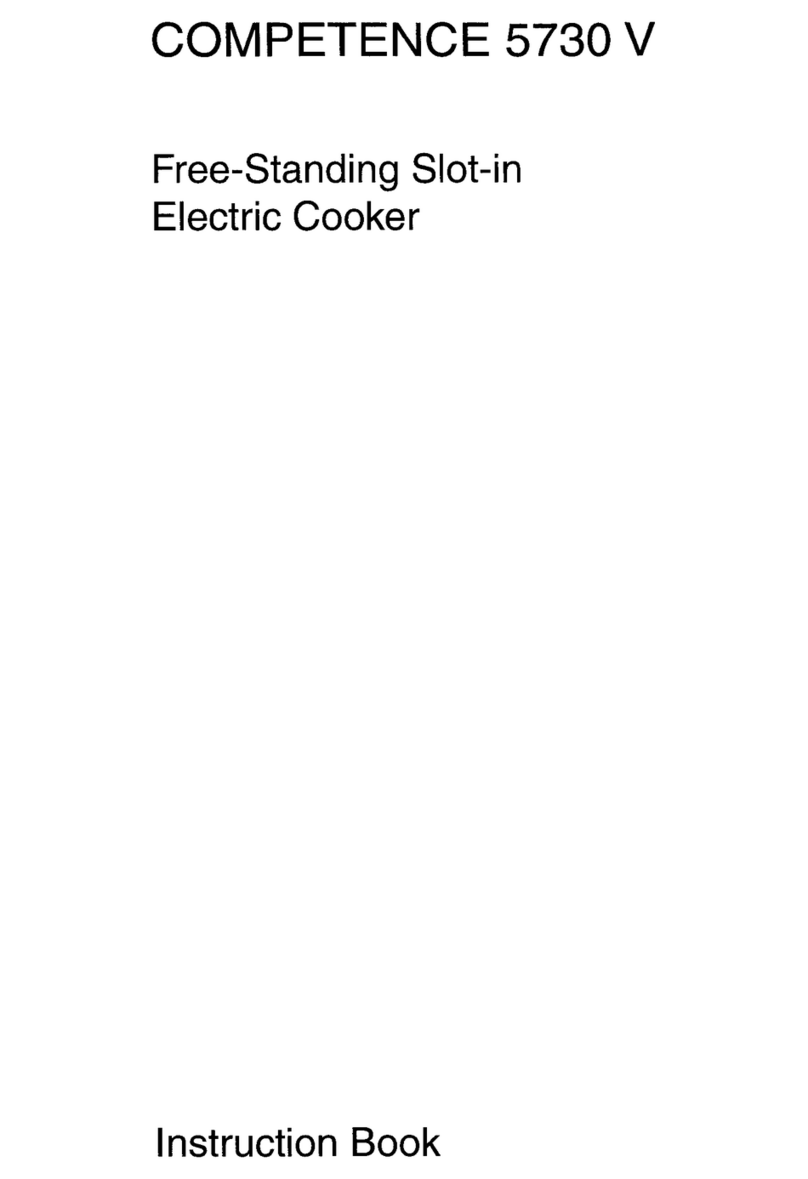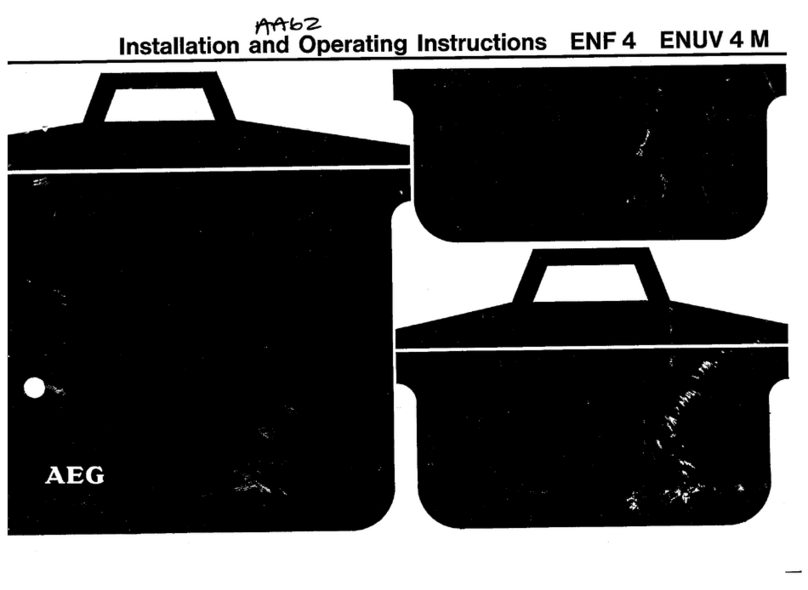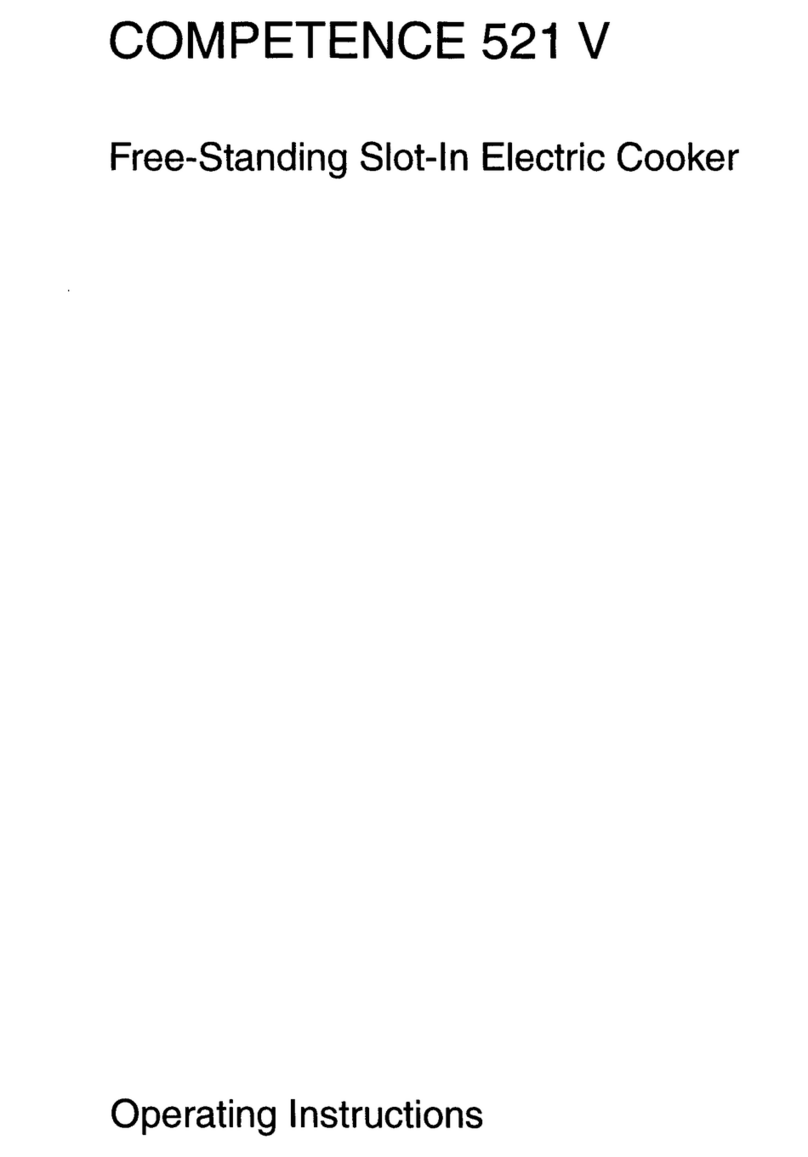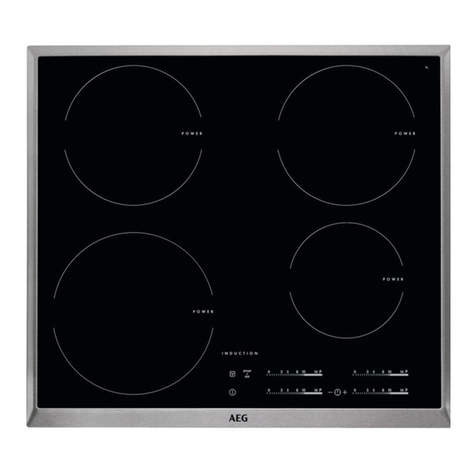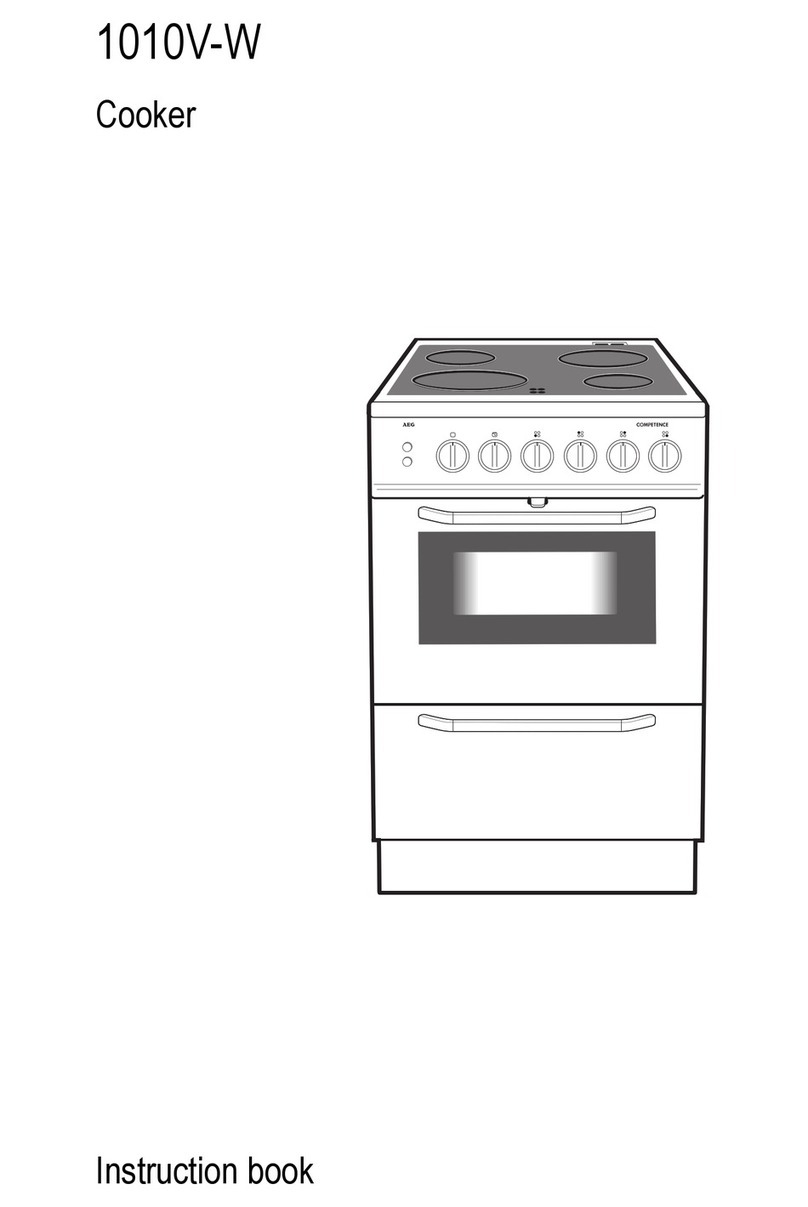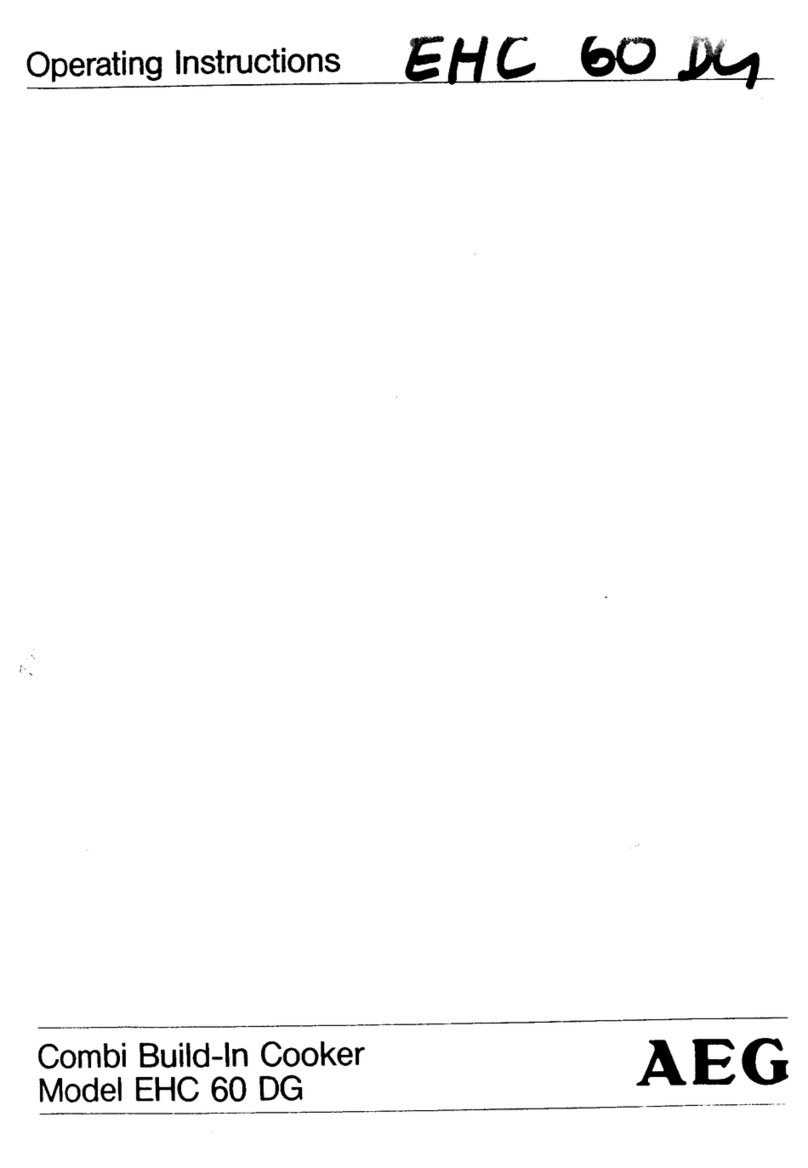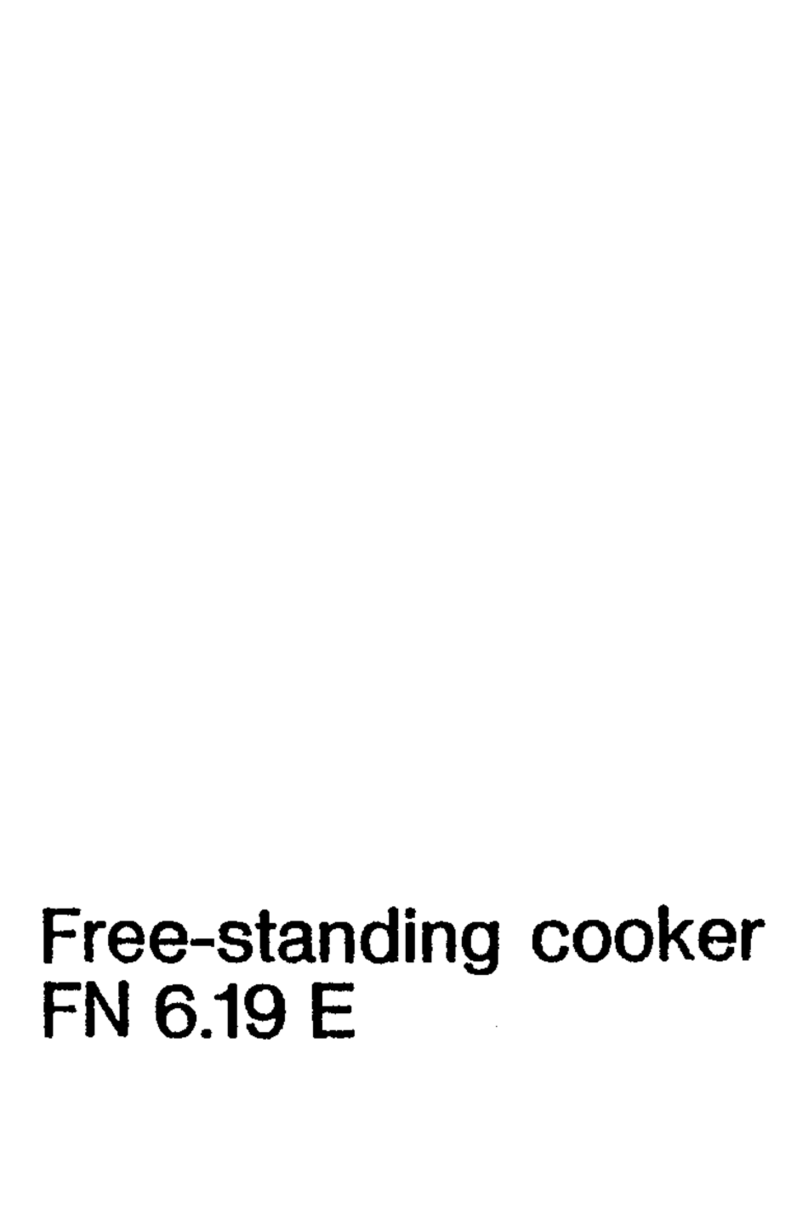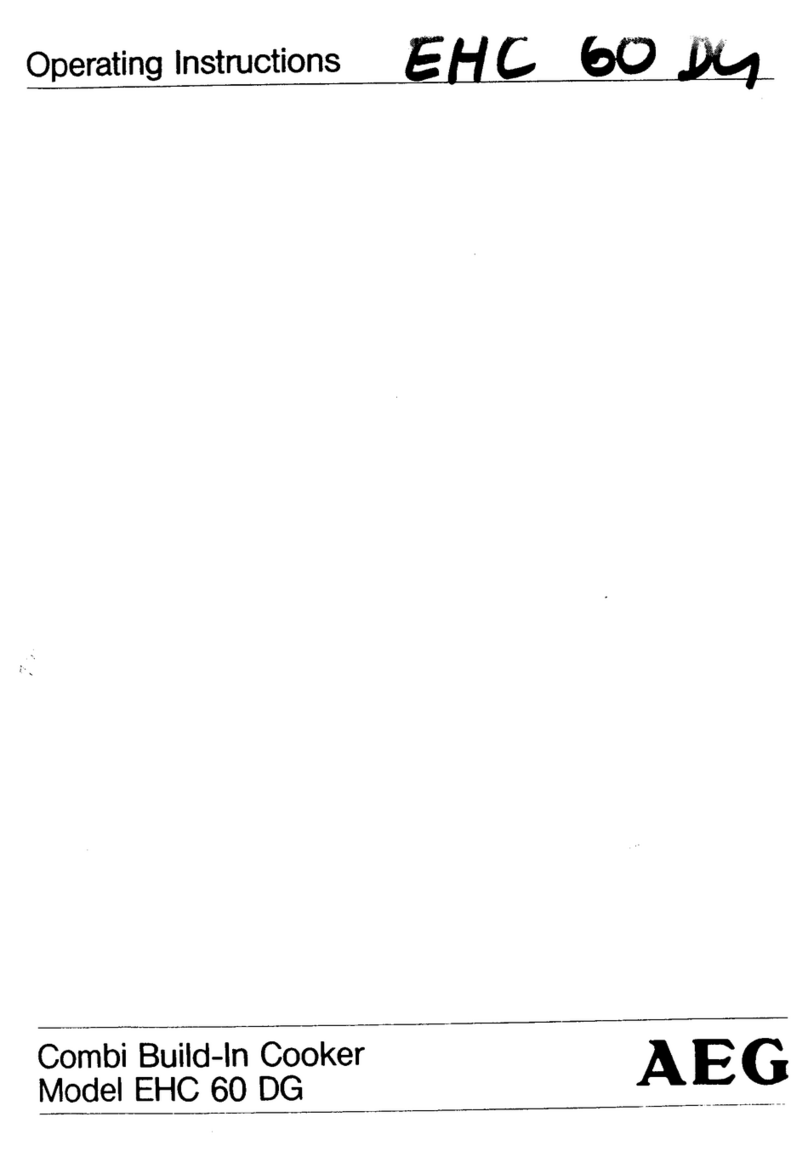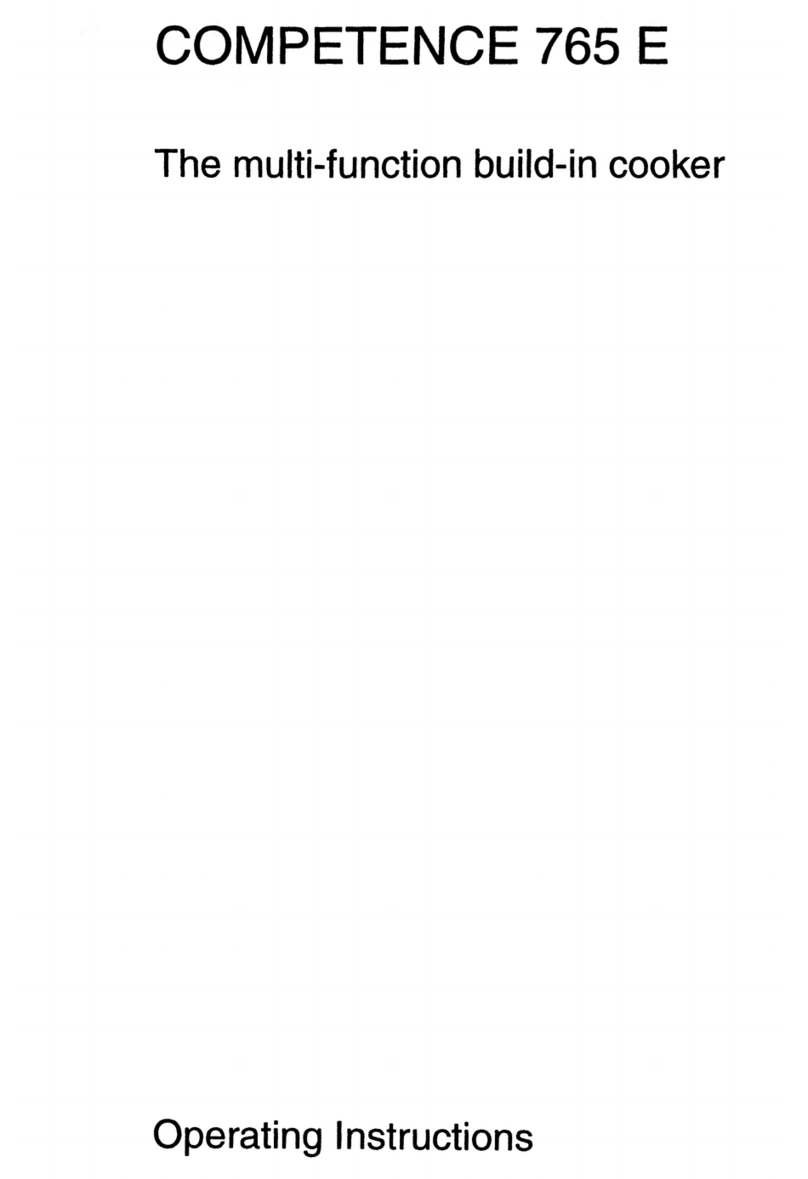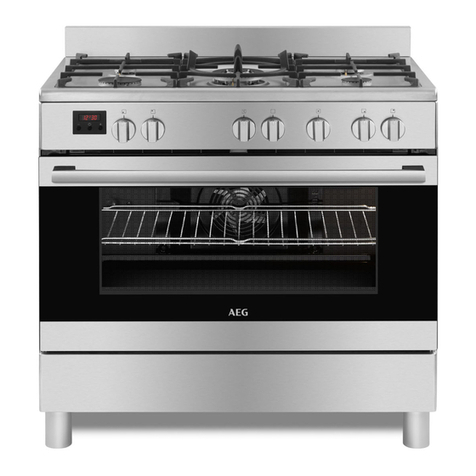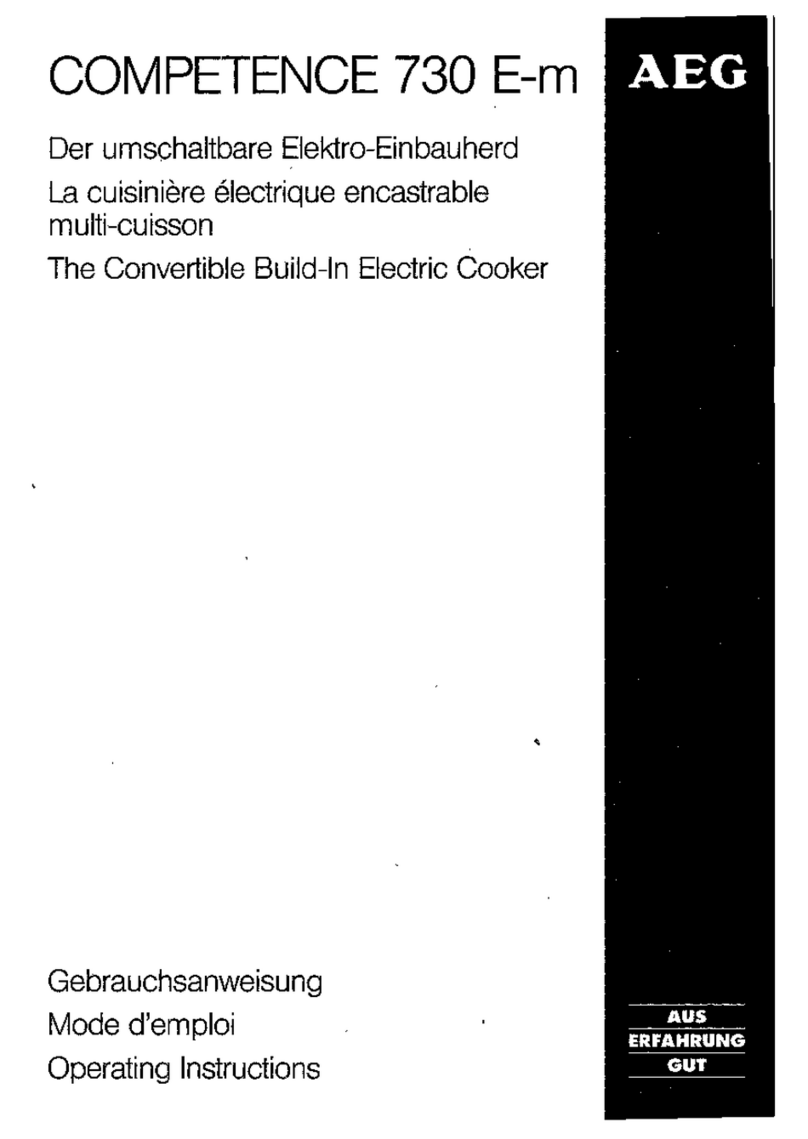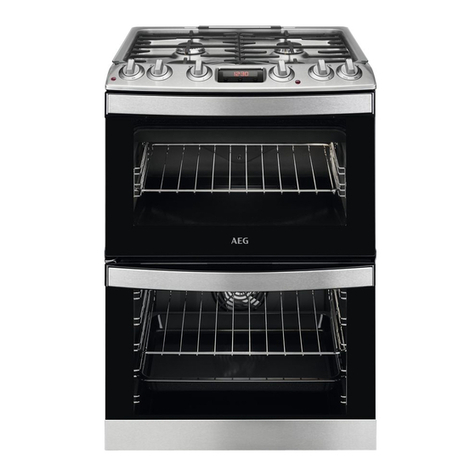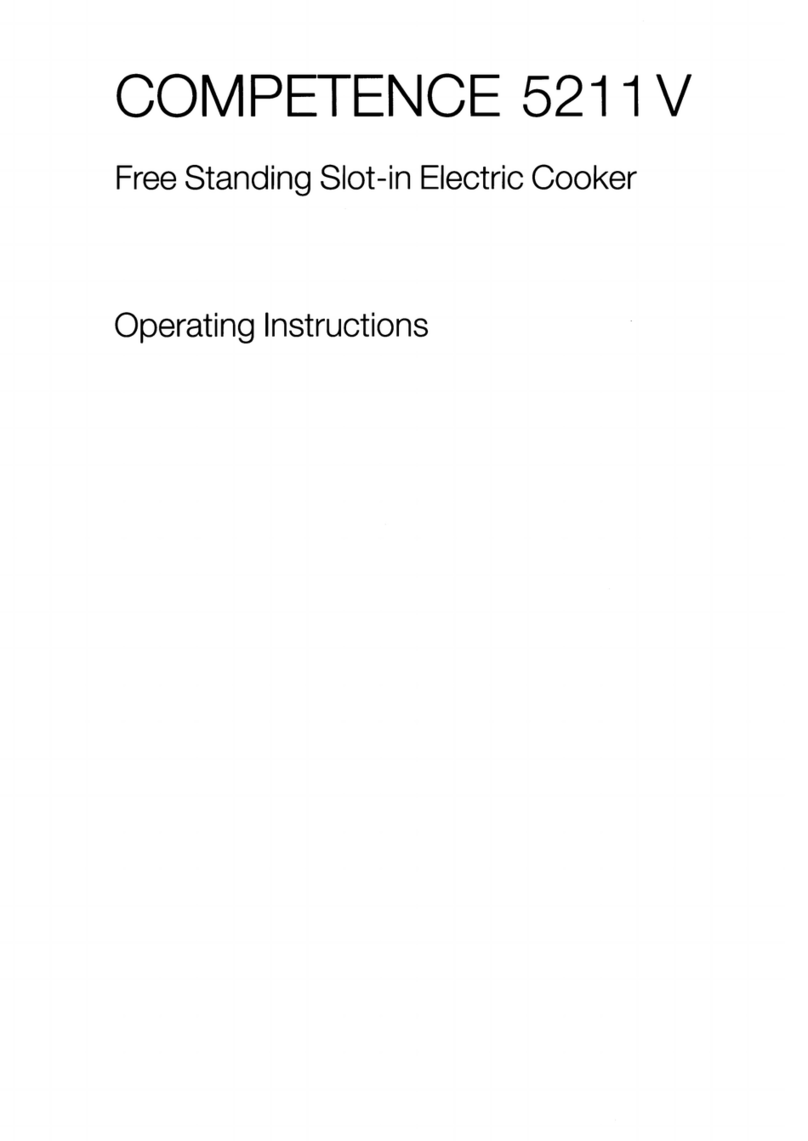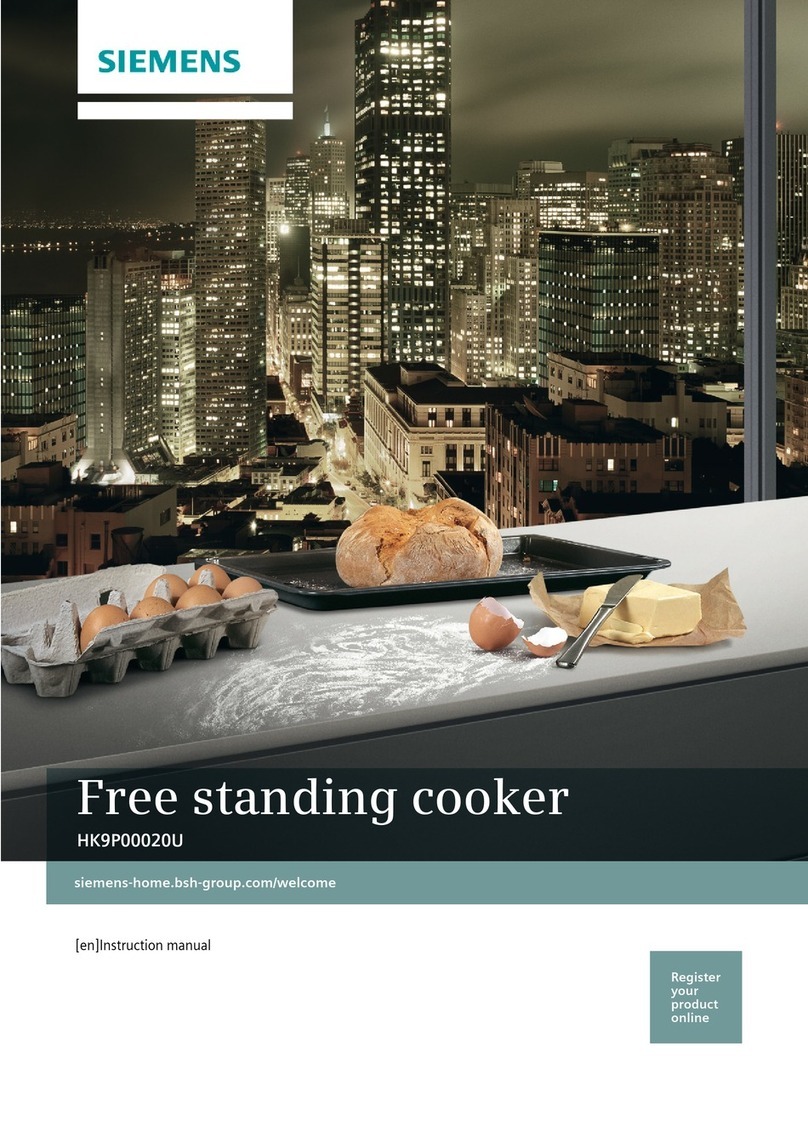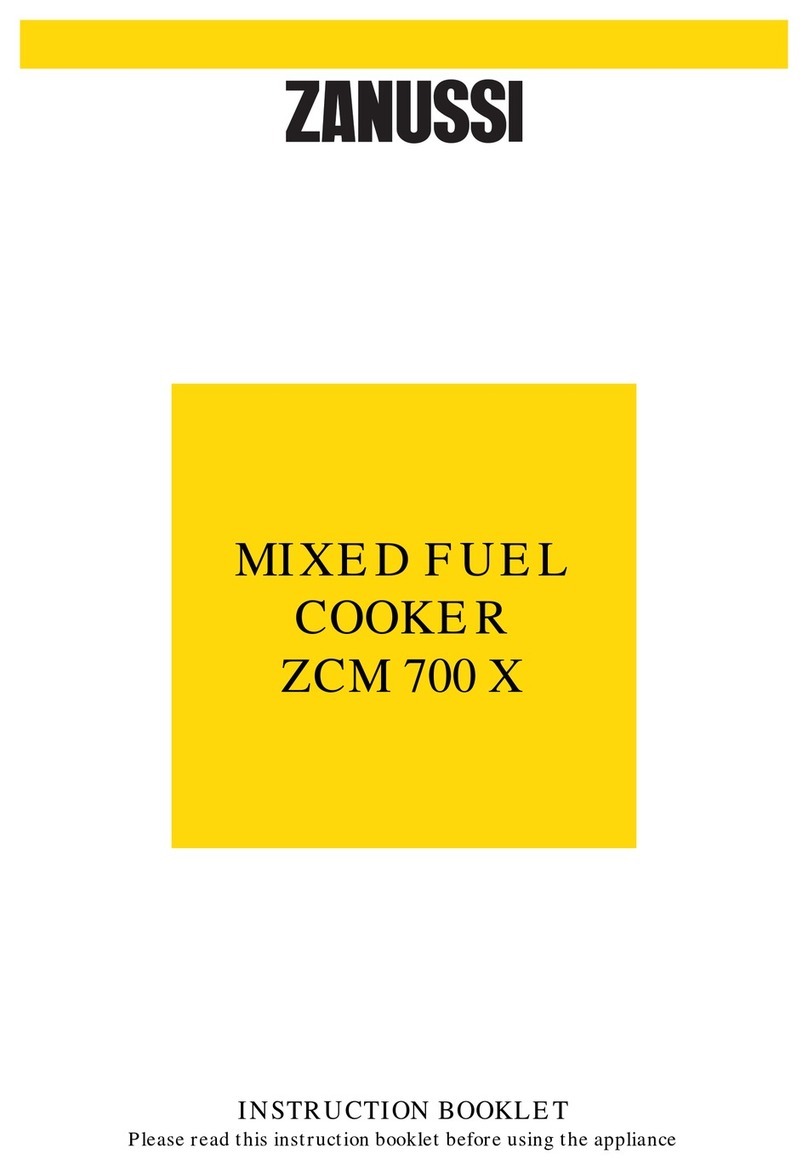
niche below the appliance, especially
when it operates or the door is hot.
• The shock protection of live and
insulated parts must be fastened in
such a way that it cannot be removed
without tools.
• Connect the mains plug to the mains
socket only at the end of the
installation. Make sure that there is
access to the mains plug after the
installation.
• If the mains socket is loose, do not
connect the mains plug.
• Do not pull the mains cable to
disconnect the appliance. Always pull
the mains plug.
• Use only correct isolation devices: line
protecting cut-outs, fuses (screw type
fuses removed from the holder), earth
leakage trips and contactors.
• The electrical installation must have
an isolation device which lets you
disconnect the appliance from the
mains at all poles. The isolation
device must have a contact opening
width of minimum 3 mm.
• Fully close the appliance door before
you connect the mains plug to the
mains socket.
2.3 Gas connection
• All gas connections must be made by
a qualified person.
• Before installation, make sure that the
local distribution conditions (nature of
the gas and gas pressure) and the
adjustment of the appliance are
compatible.
• Make sure that there is air circulation
around the appliance.
• The information about the gas supply
is on the rating plate.
• This appliance is not connected to a
device, which evacuates the products
of combustion. Make sure to connect
the appliance according to current
installation regulations. Follow the
requirements for adequate ventilation.
2.4 Use
WARNING!
Risk of injury and burns.
Risk of electrical shock.
CAUTION!
The use of a gas cooking
appliance results in the
production of heat, moisture
and products of combustion
in the room in which it is
installed. Ensure that the
kitchen is well ventilated
especially when the
appliance is in use.
Prolonged intensive use of
the appliance may require
additional ventilation, for
example the increasing of
mechanical ventilation where
present, additional
ventilation to safely remove
the products of combustion
to outside (external) air
whilst also providing room
air changes with additional
ventilation. Consult a
qualified person before
installation of the additional
ventilation.
• Do not change the specification of this
appliance.
• Make sure that the ventilation
openings are not blocked.
• Do not let the appliance stay
unattended during operation.
• Deactivate the appliance after each
use.
• Be careful when you open the
appliance door while the appliance is
in operation. Hot air can release.
• Do not operate the appliance with wet
hands or when it has contact with
water.
• Do not use the appliance as a work
surface or as a storage surface.
WARNING!
Risk of fire and explosion
• Fats and oil when heated can release
flammable vapours. Keep flames or
heated objects away from fats and
oils when you cook with them.
• The vapours that very hot oil releases
can cause spontaneous combustion.
• Used oil, that can contain food
remnants, can cause fire at a lower
temperature than oil used for the first
time.
www.aeg.com6



